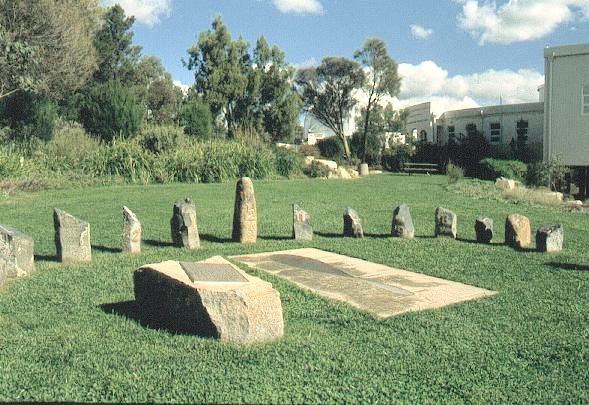
Analemmatic dials
Mount Stromlo Observatory, Canberra (A.C.T., Australia)

This sundial can be found on the grounds of Mount Stromlo Observatory. It is undeniably a brother of the "Sundials of Human Involvement" on Mount Annan, in Kingston and in Wellington. Again rough-hewn stones as hour markers, and again an unjustified analemma as date line. A similar accessory horizontal dial, the shadow of which is just visible at the far right, to give the precise time. The bronze hour numbers are mounted to the vertical faces of the hour stones; counter-clockwise, as it should be in the Southern Hemisphere. The dial reads Australian Eastern Standard Time. The difference with local time is small, at least in winter: the length correction for this location is less than 8 minutes (watch fast).
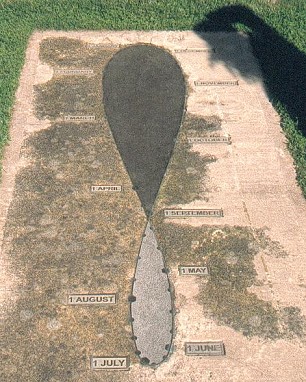 |
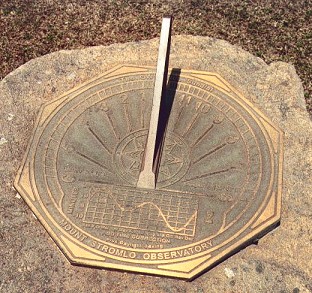 |
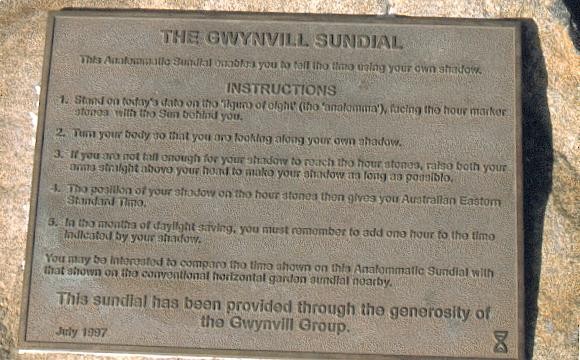
Mount Stromlo Observatory is the elder of the two observatories operated by the Research School of Astronomy and Astrophysics (RSAA) of the Australian National University (ANU) in Canberra. It opened in 1923 and is located a couple of miles west of Canberra, the capital of Australia, which was born on the drawing board in the beginnning of the 20th century.
The largest telescopes were the 74" (188 cm) and 50" (127 cm) reflectors. The largest refractor was the 26" (66 cm) Yale-Columbia telescope. The Visitor Center was built in 1997 (in the top of the map) between the 50" and the Yale telescope buildings, and the analemmatic dial was installed at this occasion. It was donated by the Gwynvill Group (a share and property investment company), as the instruction plate tells us.
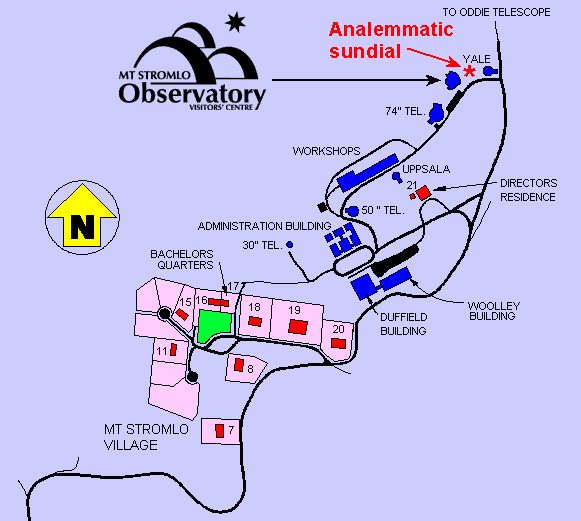
On Saturday, January 18, 2003, the sundial witnessed the catastrophe that devastated the Observatory. The fire-storms that swept through the Canberra region destroyed five telescopes and most of the other instruments, as well as the workshops and much of the library and the archives, in only two minutes. Also the amateur astronomers of Canberra lost their telescopes. See this webpage for a summary of the damage.
The pictures below, of the large 74" telescope and the Yale-telescope, were spread all over the world, for instance through the BBC website.
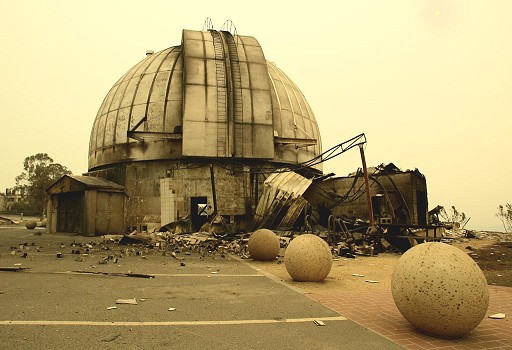
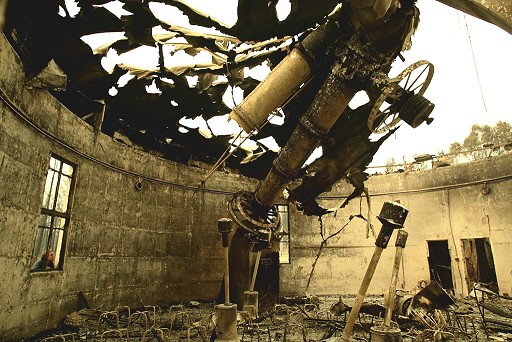
Wood fires can behave quite unpredictably, as is demonstrated below: the buildings housing the Yale (at the left) and the 74" telescope have been destroyed, but the Visitor Center in between and the trees across the road from it survived seemingly undamaged. The sundial is in the yellow circle. Photo: Jason Phillips.
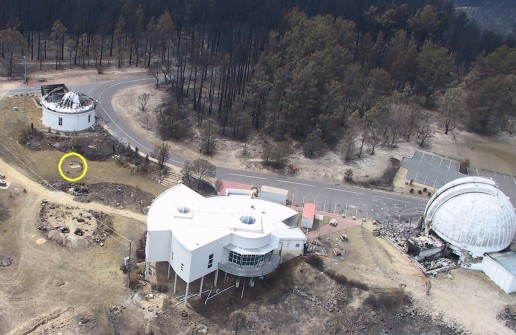
The sundials survived untouched. They were on a patch of lawn which had an irrigation pipe burn uphill of them and flood the area, as Dr. Vince Ford of the Observatory reported. The picture below, by Michael Yelds, was taken on January 25, 2003, a week after the disaster.
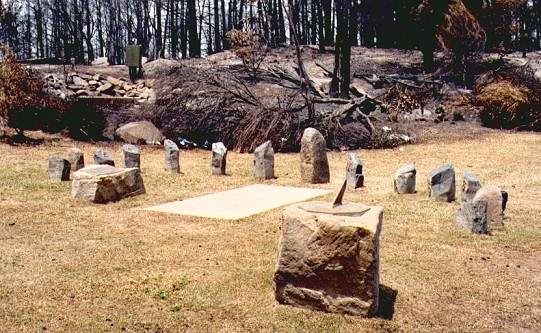
The observatory served mainly for the training of astronomy students and the testing of instruments. These days, advanced astronomical research requires much larger telescopes, located on high peaks so as to reduce the effects of turbulence, and far away from civilisation, to avoid light pollution.
Fortunately, the Canberran astronomers don't sit down in despair. The website lists the plans for rebuilding the facilities and installing two new telescopes.
The pictures were made by Conxita Bou from Barcelona in April 2002, unless otherwise stated.
This link gives access to lots of pictures from before and after the disaster.
Location: 35.3° ZB, 148.1° OL
Design: Sundials Australia (Margaret Folkard & John Ward)
Inauguration: July 1997